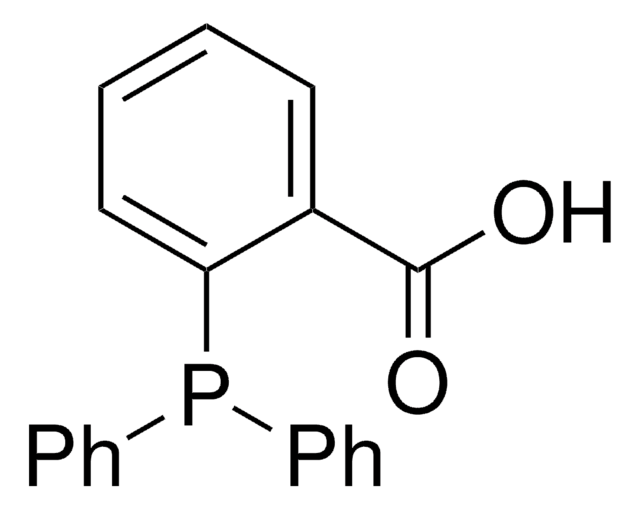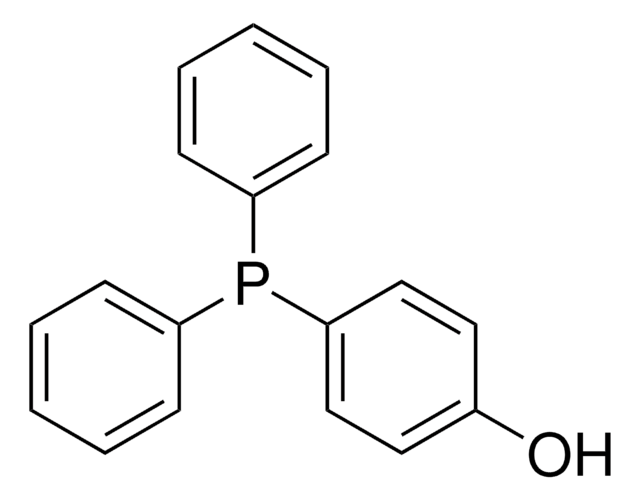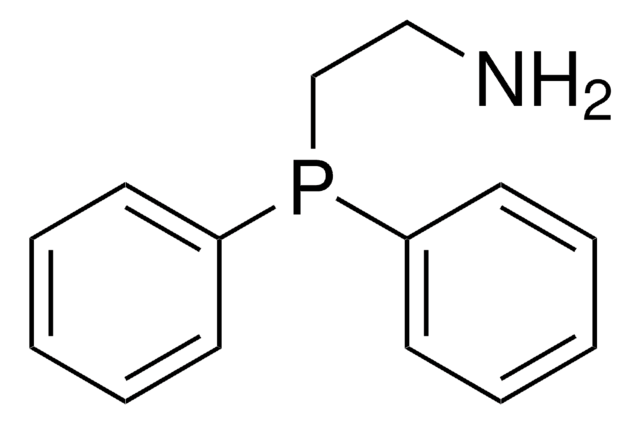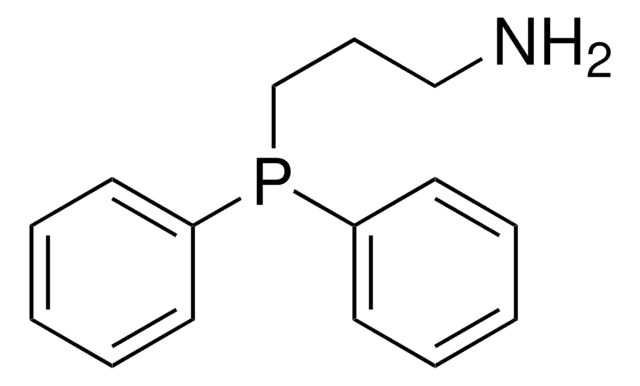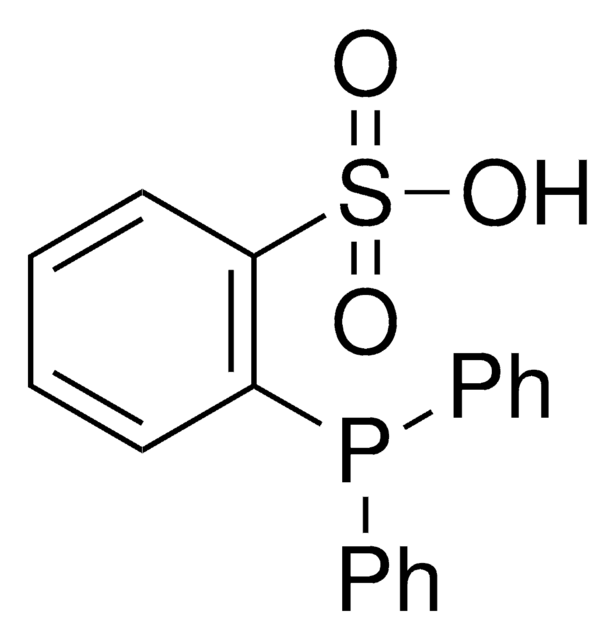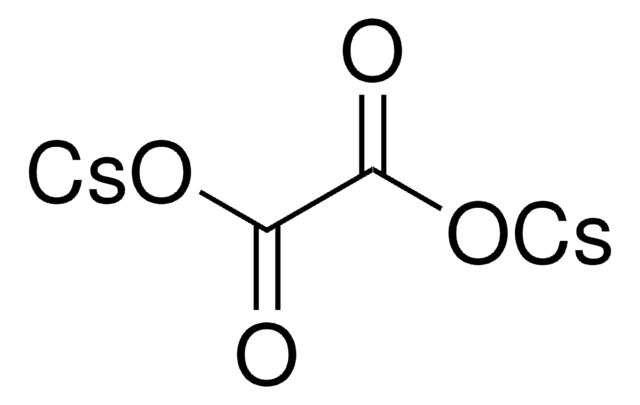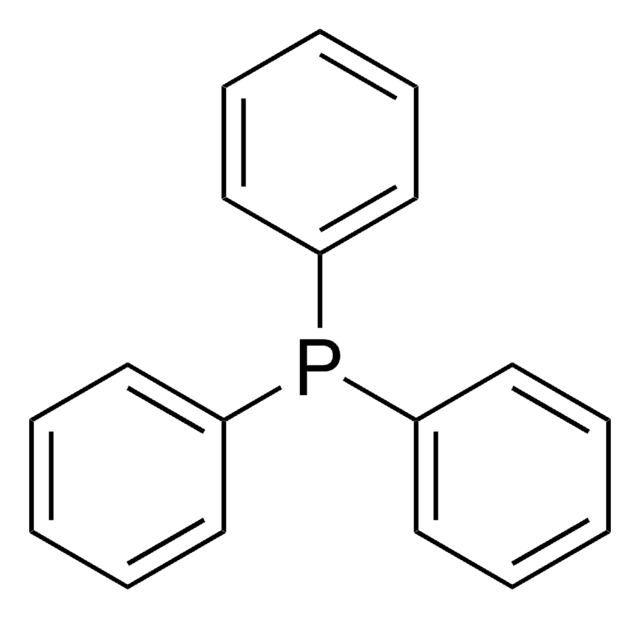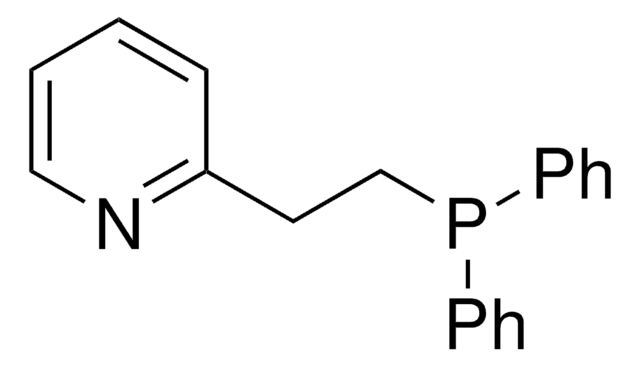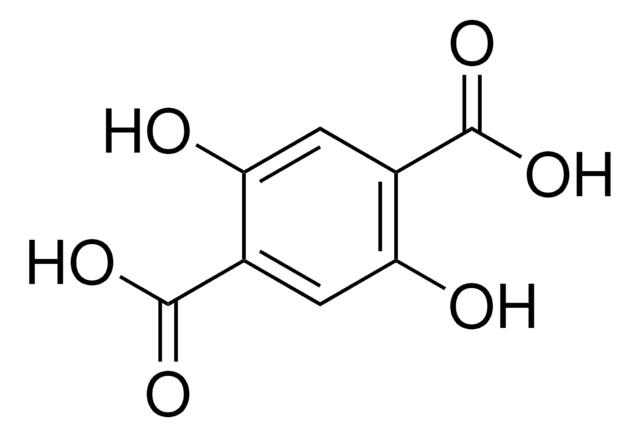401595
4-(Diphenylphosphino)benzoic acid
97%
Synonym(s):
(4-Carboxyphenyl)diphenylphosphine, Diphenyl(p-carboxyphenyl) phosphine, p-(Diphenylphosphino)benzoic acid
About This Item
Recommended Products
Quality Level
Assay
97%
reaction suitability
reaction type: Buchwald-Hartwig Cross Coupling Reaction
reaction type: Heck Reaction
reaction type: Hiyama Coupling
reaction type: Negishi Coupling
reaction type: Sonogashira Coupling
reaction type: Stille Coupling
reaction type: Suzuki-Miyaura Coupling
reagent type: ligand
mp
157-160 °C (lit.)
functional group
phosphine
SMILES string
OC(=O)c1ccc(cc1)P(c2ccccc2)c3ccccc3
InChI
1S/C19H15O2P/c20-19(21)15-11-13-18(14-12-15)22(16-7-3-1-4-8-16)17-9-5-2-6-10-17/h1-14H,(H,20,21)
InChI key
GXMHDTPYKRTARV-UHFFFAOYSA-N
General description
Application
- Organostannoxane-supported palladium nanoparticles. The resulting catalysts show high activity and selectivity in Suzuki-coupling reactions.
- Polymetallic ruthenium-zinc complex catalyst for the hydrogenation of levulinic acid to γ-valerolactone.
Signal Word
Warning
Hazard Statements
Precautionary Statements
Hazard Classifications
Eye Irrit. 2 - Skin Irrit. 2 - STOT SE 3
Target Organs
Respiratory system
Storage Class Code
11 - Combustible Solids
WGK
WGK 3
Personal Protective Equipment
Choose from one of the most recent versions:
Already Own This Product?
Find documentation for the products that you have recently purchased in the Document Library.
Our team of scientists has experience in all areas of research including Life Science, Material Science, Chemical Synthesis, Chromatography, Analytical and many others.
Contact Technical Service